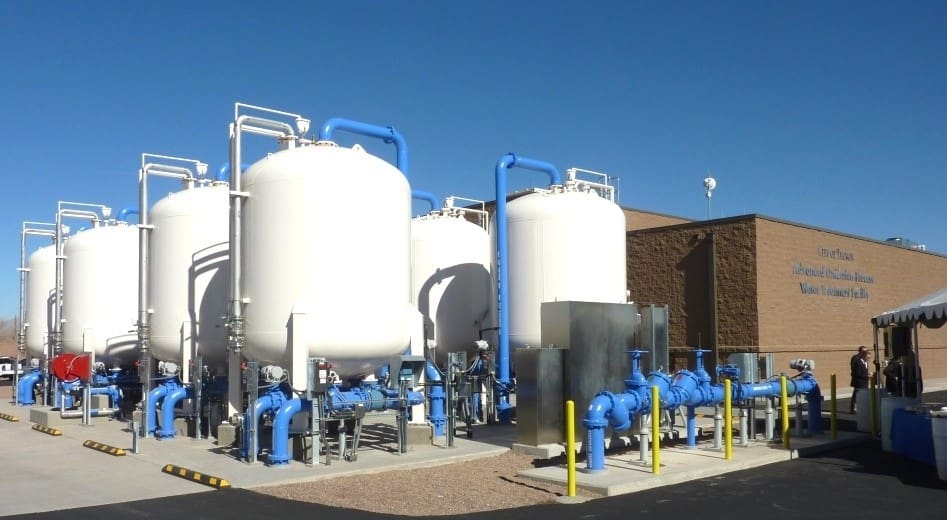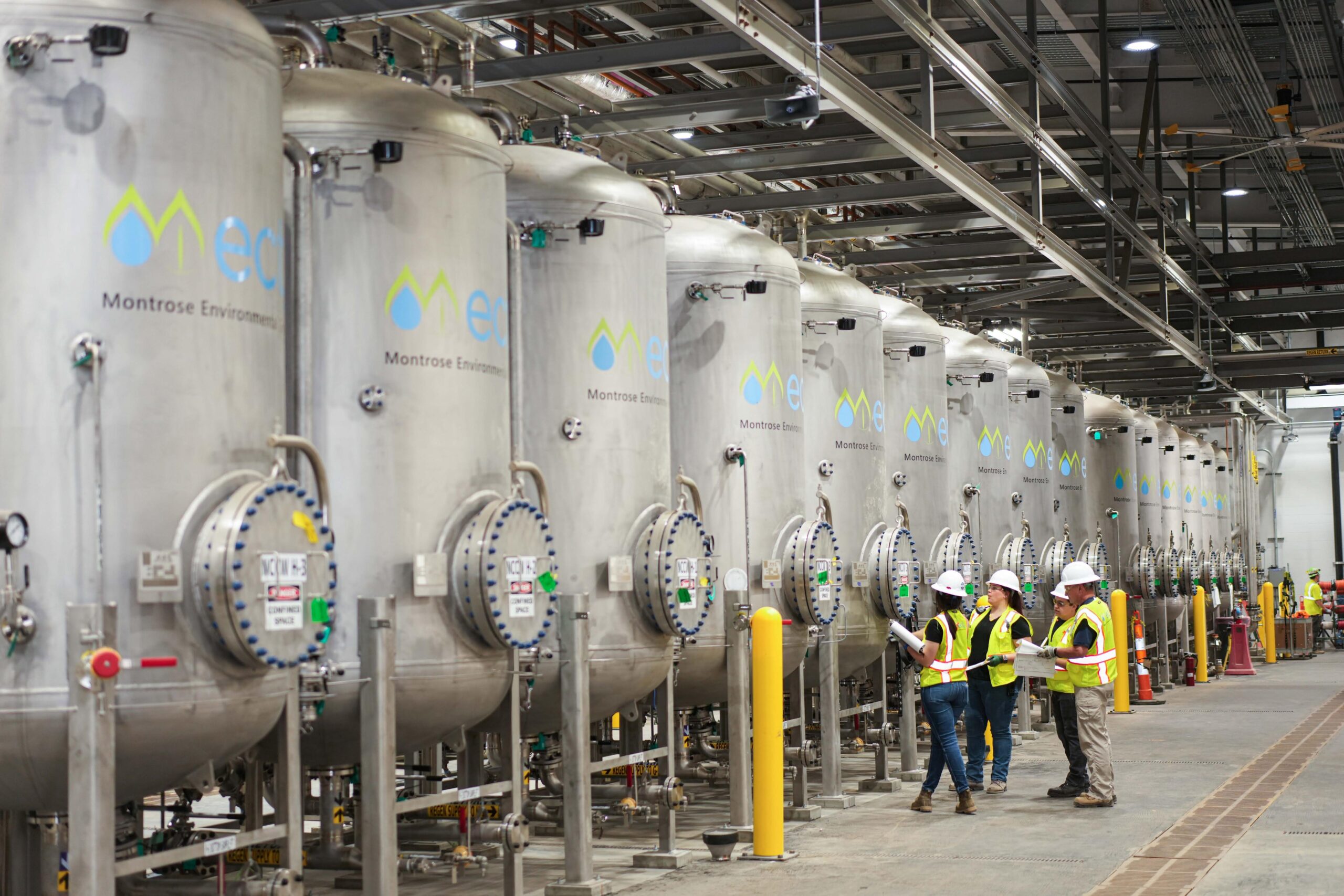M270 PFAS Treatment for Rapid Removal of Contaminants
Wiki Article
Your Guide to PFAS Therapy Technologies and Perks
The prevalence of PFAS contamination in water resources demands a thorough understanding of readily available treatment technologies. Different methods, such as triggered carbon filtering, ion exchange systems, and advanced oxidation procedures, present unique advantages in attending to these persistent toxins. Each technology not just targets specific PFAS compounds yet also plays an important duty in enhancing general water quality and securing ecological integrity. As neighborhoods face the ramifications of PFAS direct exposure, the selection of a proper therapy technique ends up being significantly important, triggering a better evaluation of these innovations and their particular benefits.Comprehending PFAS Contamination
Comprehending PFAS contamination is crucial for addressing its pervasive effect on ecological and human health and wellness (m270 pfas treatment). Per- and polyfluoroalkyl compounds (PFAS) are a team of artificial chemicals commonly utilized in different industrial and consumer products as a result of their water- and grease-resistant residential properties. Generally located in firefighting foams, non-stick cooking equipment, and water-repellent textiles, PFAS have actually gone into the atmosphere via manufacturing procedures, wastewater discharges, and seeping from garbage dumpsWhen released, these materials continue the environment, bring about prevalent contamination of dirt and water resources. Their special chemical structure, defined by strong carbon-fluorine bonds, renders them resistant to degradation, resulting in a sensation understood as "permanently chemicals." As a result, PFAS can build up in the human body and the food chain, possibly creating adverse health effects, consisting of immune system disruption, developing problems, and an increased threat of specific cancers.
Regulatory companies and health companies are increasingly identifying the importance of PFAS contamination, motivating efforts to check, evaluate, and alleviate its impacts. Comprehending the paths of PFAS contamination is vital for informing public law and creating reliable methods to secure both environmental and human health and wellness.
Overview of Treatment Technologies
Different therapy innovations have been established to attend to the challenges presented by PFAS contamination in water and dirt. These technologies can be extensively categorized right into several groups, each with its special devices and efficiency in removing PFAS compounds.One prominent strategy is ion exchange, which uses material products to record and remove PFAS from infected water. This technique is specifically effective for short-chain PFAS and can achieve significant decreases in focus levels. One more technology, progressed oxidation procedures (AOPs), utilizes solid oxidants and ultraviolet light to break down PFAS right into less dangerous materials. AOPs are appropriate for dealing with a variety of PFAS substances yet might call for mindful optimization to optimize efficiency.

Activated Carbon Filtering
Turned on carbon purification is an extensively made use of approach for the elimination of PFAS from polluted water, understood for its capacity to adsorb a wide array of natural substances. This innovation utilizes triggered carbon, a highly porous material with a substantial surface, which assists in the binding of PFAS molecules with physical adsorption. The effectiveness of activated carbon in removing PFAS is influenced by several factors, including the kind of carbon utilized, the get in touch with time, and the concentration of PFAS in the water.Among the benefits of activated carbon purification is its convenience; it can be implemented in numerous configurations, such as granular activated carbon (GAC) systems or powdered turned on carbon pfas waste management (POLITICAL ACTION COMMITTEE) systems. GAC systems are generally employed in larger-scale applications, while political action committee can be used in smaller or short-lived configurations. The modern technology is fairly very easy to operate and keep, making it easily accessible for numerous water treatment centers.

Ion Exchange Systems
Ion exchange systems stand for another effective approach for the elimination of PFAS from polluted water, enhancing techniques like turned on carbon filtering. These systems operate on the concept of exchanging ions in the water with ions hung on a resin material. Ion exchange materials can be specifically developed to target the adversely charged PFAS substances, properly capturing them and enabling cleaner water to pass through.One of the key advantages of ion exchange systems is their capability to get rid of a variety of PFAS, including both long-chain and short-chain variations. This flexibility makes them suitable for different applications, varying from municipal water treatment to industrial processes. Additionally, ion exchange systems can frequently attain reduced discovery limitations for PFAS compared to a few other treatment techniques, thus improving water high quality.
Nevertheless, it is important to check and manage the regeneration of ion exchange media, as the performance can decline over time because of saturation. Appropriate upkeep and substitute of the resin are vital for maintaining the system's effectiveness. On the whole, ion exchange systems give a trusted and effective option for PFAS elimination, adding dramatically to safe alcohol consumption water requirements and environmental management.
Advanced Oxidation Processes
Advanced Oxidation Processes (AOPs) utilize effective oxidants to properly deteriorate PFAS compounds in polluted water. These cutting-edge treatment approaches produce very reactive varieties, such as hydroxyl radicals, that can break down complex PFAS molecules into much less damaging byproducts. m270 pfas treatment. AOPs typically utilize combinations of ultraviolet (UV) light, ozone, hydrogen peroxide, or Fenton's reagent, boosting the oxidation possibility and boosting deterioration performanceThe primary benefit of AOPs depends on their capability to target a broad variety of PFAS substances, consisting of both long-chain and short-chain variations. This flexibility is essential, as PFAS contamination typically involves blends of different compounds with differing chemical frameworks. In addition, AOPs can be integrated right into existing water therapy systems, making them a functional option for several districts and sectors.
However, the application of AOPs can be resource-intensive, calling for careful factor to consider of operational expenses and power intake. Furthermore, while AOPs are effective in breaking down PFAS, they may not totally get rid of all results, requiring additional treatment steps - m270 pfas treatment. On the whole, AOPs stand for an encouraging avenue for resolving PFAS contamination, adding to cleaner water sources and enhanced public wellness protection

Conclusion
Finally, attending to PFAS contamination requires a detailed understanding of offered treatment modern technologies. Turned on carbon filtering, ion exchange systems, and advanced oxidation procedures each present unique benefits for successfully eliminating these harmful substances from water sources. By picking the proper innovation, neighborhoods can improve water quality, secure public health, and minimize the ecological risks connected with PFAS exposure. Proceeded research and application of these methods are essential for efficient management of PFAS contamination in impacted locations.Report this wiki page